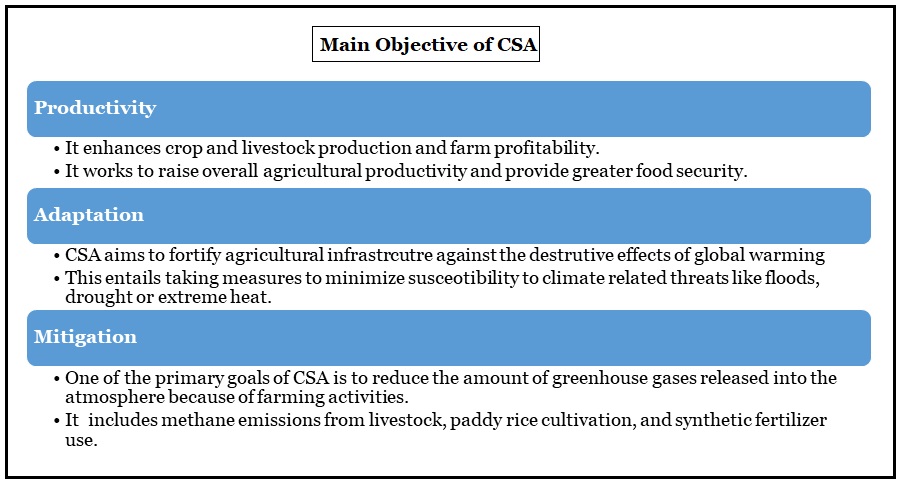900 319 0030
enquiry@shankarias.in
Climate resilient agriculture has the potential to assure food security, empower farmers, and protect our delicate ecosystems.

The study of Northwest Indo-Gangetic Plain for wheat production shows that site-specific no-tillage is advantageous for fertilizer management and can boost yield, nutrient usage efficiency, and profitability while lowering GHG emissions.
|
Steps taken by India to promote CSA |
|
References